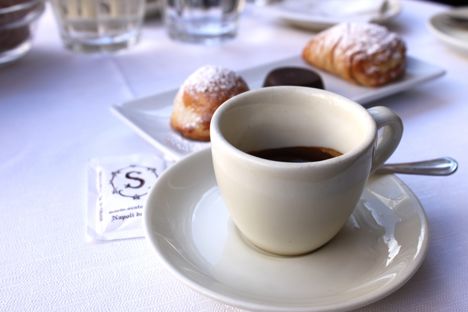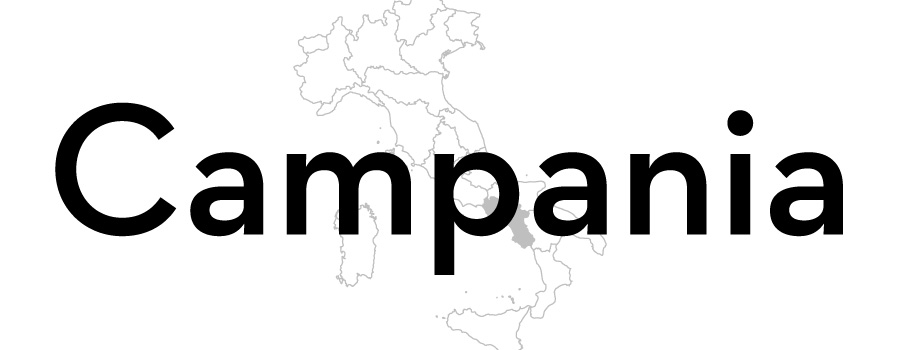
Raising the bar: Naples' coffee scene
Luciana Squadrilli takes an in-depth look at how people drink coffee in Naples and the bars – not cafés – that serve it.
View more from this series:
Italy's regional cuisineItaly’s coffee is even more diverse and complicated than its pasta. The country's coffee culture dates back to the sixteenth century, when the first mysterious beans arrived in Venice on board the shipping boats coming from Middle East with their precious loads. The scene exploded in the late eighteenth century, when the invigorating drink was commonly served in dedicated venues – called Caffè – where the local intelligentsia met to converse about culture and politics.
The habit to drink it espresso – brewed to order and quite short – was born in Turin in 1884, and in the same year the first espresso machine was patented. Turin, Milan, Venice and Trieste were the coffee capitals in Northern Italy, while Naples – with its thriving cultural life and the bustling Royal Court – was the undisputed one in the South.
Apparently, it was Maria Carolina of Austria – King Ferdinand IV's spouse in 1768, Queen of Naples and Sicily – who introduced coffee to Naples. Since then, the city developed its own coffee culture, quite different from the rest of the country and with a number of distinctive features, rituals and traditions. Some of them are still observed today, and they are intimately linked to the city's daily life and culture. Wandering along the narrow streets of the Centro Storico (the old town centre full of magnificent churches and ancient buildings) you can even find small coffee stalls decorated like the presepio (the recreation of the nativity scene present in every Neapolitan house during Christmas time) or Pulcinella statues (the famous Neapolitan stock comic character) on top of coffee pots. Let's see how you can experience those peculiar habits around Naples' best ‘bars’, which is what cafés are commonly called in Italy.
Culture club
Luciana Squadrilli
Let's start with the miscela, the blend of roasted coffee beans used to brew the coffee. While in the rest of Italy – and possibly, the world – Arabica varieties are definitely more appreciated, Neapolitans still have a taste for Robusta, the cheaper variety which gives more body and a distinctive bitter taste to coffee. This is why you will commonly find blends in the city’s bars – every barista choose their favourite blend or brand, instead of single origin coffee. You need one or two different Arabica beans mixed with a good quality Robusta to have a proper Neapolitan espresso (known as a ristretto). It’s served even shorter than in the rest of Italy, has a creamy texture and a low acidity. Grinding is crucial, too; traditional espresso requires a specific grain, but the most expert baristas slightly modify it according to daily temperatures and humidity.
In many Neapolitan bars, the barista's job is not limited to the brewing phase. In most cases coffee is drunk at the counter, where customers will usually receive a tazzina – the specific small coffee cup – with a free glass of water, to be drunk before coffee as a palate-cleanser. Drinking it afterwards would mean the coffee did not taste good. In some bars, another tradition is still alive: a fixed amount of sugar is added by the barista as well, and if you prefer your coffee unsweetened – or with a specific quantity of sugar – you have to ask for it. Look out for the informative sign, and be ready to specify how you like your coffee!
Be aware when you bring the cup to your lips; you could get burned. To ensure a perfect tasting experience and to guarantee cleanliness, the cups are often kept into boiling water to enhance the coffee taste and aroma. An old Neapolitan saying states that a perfect coffee has to follow the ‘four Ms’ guideline: miscela (the blend), macchina (the coffee machine), macinatura (grinding, including texture, and cleanliness) and mano (hand; the barista's experience and ability). As a sign of appreciation and gratitude, in Neapolitan (and Italian) bars people usually add spare change to their receipt when they ask for the coffee at the counter.
Another Neapolitan habit related to coffee is the caffè sospeso. Literally meaning ‘suspended coffee’, it means paying for a coffee not yet made, leaving it for poor people who can't afford one. Born during the post-war period, when coffee was considered a reinvigorating drink and a good way to get some energy and warmth when there was nothing else to eat, the habit has recently spread to different items such as pizza and drinks. This could be a mere marketing strategy, but in many traditional coffee bars, especially in the old centre, the caffè sospeso is solely about solidarity and sharing.



